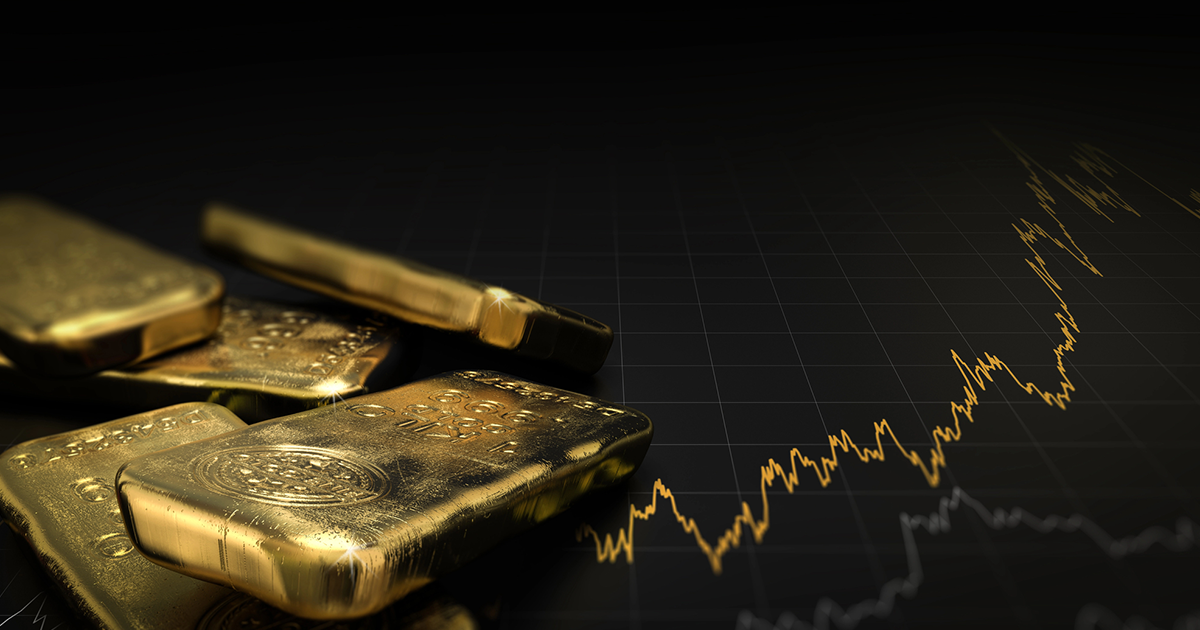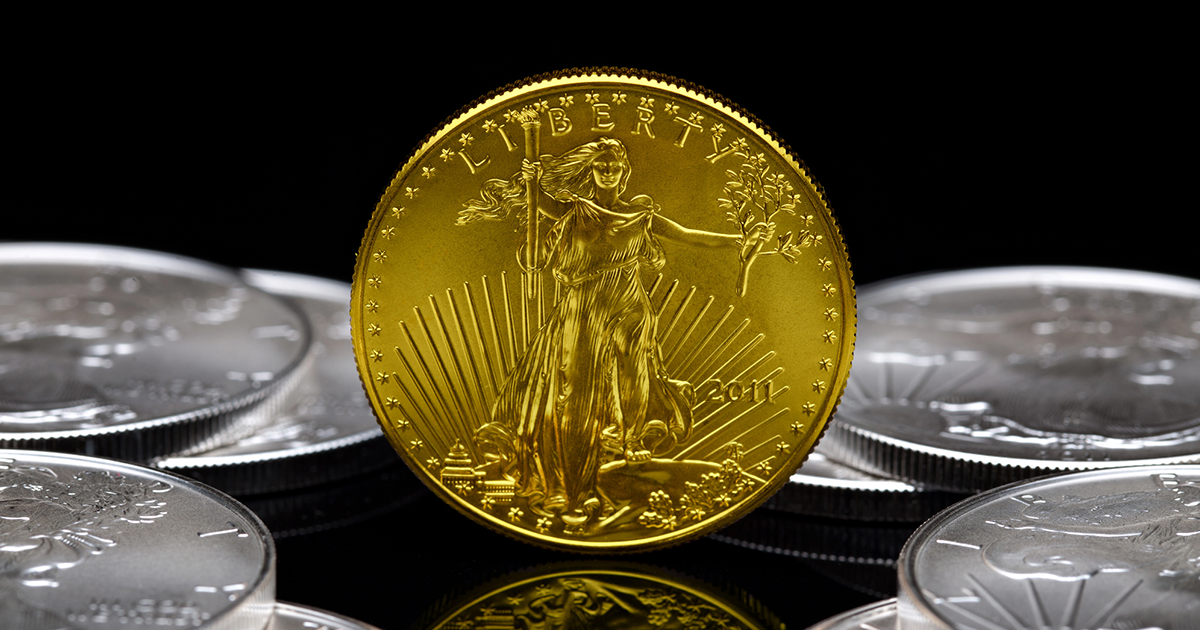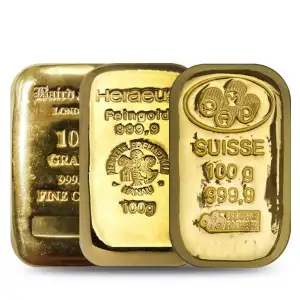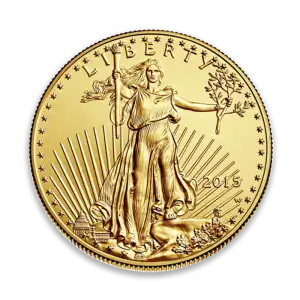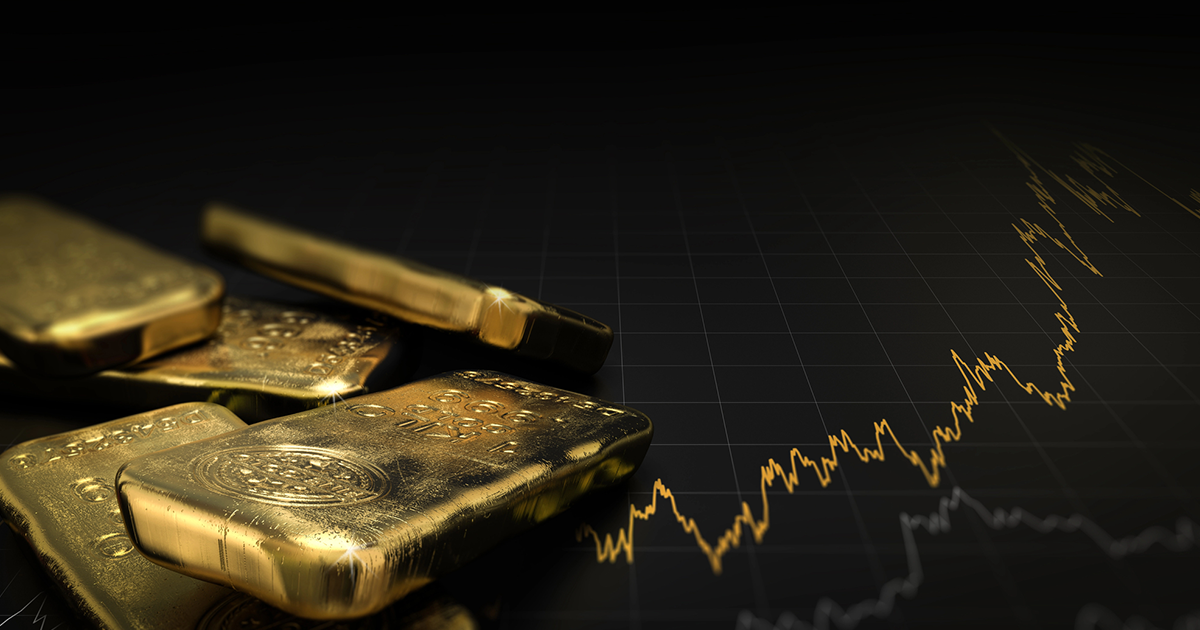
What Investors in Chantilly & Vienna, VA Should Know
When uncertainty looms, gold often shines brightest. As one of the oldest and most reliable stores of value, gold prices are directly influenced by a range of global economic trends. Escalating trade tensions and geopolitical risk between major economies like the US and China are significantly impacting gold prices, leading to a surge in demand for gold as a safe-haven asset. Whether you’re a seasoned investor or just starting out in Chantilly or Vienna, VA, understanding these dynamics can help you make more informed decisions when buying or selling gold.
Introduction to Gold Prices
Gold prices have always been a focal point for investors and economists, especially given the precious metal’s significant surge in recent years. The gold market is a complex ecosystem influenced by a myriad of factors, including economic uncertainty, geopolitical risks, and central bank purchases. According to the World Gold Council, central banks have been ramping up their gold purchases, viewing the metal as a reliable safe haven asset amidst global economic uncertainties. Central bank reserves play a significant role in gold price dynamics, as these institutions purchase gold to maintain monetary stability and protect national wealth.
The recent record levels in gold prices underscore its role as a hedge against inflation and economic turmoil. Gold prices have risen to all time high levels due to various factors such as trade tensions and a weakening US dollar. The demand for gold spans various sectors, from investment and jewelry to technology, each contributing to the overall gold demand trends. Annual consumption in the jewelry sector, influenced by cultural factors, accounts for a substantial portion of the total demand. The demand for gold is spread across various countries, with China and India being major players in jewelry consumption.
Gold prices are influenced by a range of factors, including supply and demand dynamics, interest rates, and the value of the US dollar. Mine production, although contributing a small percentage to the overall gold stock, is influenced by technological advancements and regulatory constraints. Trading economics also play a crucial role in understanding market dynamics. An important factor is the inverse relationship between the US dollar and gold prices; when the dollar weakens, gold prices typically rise. This is because a weaker dollar makes gold cheaper for investors holding other currencies, thereby increasing global demand. A key factor in gold's recent price surge is the weakening of the US dollar, making gold more appealing to international investors.
As a store of value, gold’s purchasing power remains relatively stable over time, making it an attractive option for those looking to safeguard their wealth. Considering future results is important when investing in gold, as historical performance does not guarantee outcomes. The current surge in gold prices has piqued the interest of many investors, prompting them to consider adding gold to their investment portfolios. Exchange traded funds (ETFs) allow investors to access gold prices without the complexities of physical ownership. Past performance highlights gold's stability and value retention amidst economic uncertainty. Escalating trade tensions between major economies like the US and China are significantly impacting gold prices, leading to a surge in demand for gold as a safe-haven asset. Reciprocal tariffs have broader economic implications and market anxieties related to these protective measures.
Whether driven by economic uncertainty or the desire to hedge against inflation, the demand for gold continues to grow, solidifying its status as a cornerstone of investment strategies. Key factors driving the recent surge in gold prices include economic conditions and market trends, contributing to its impressive growth.
Understanding Gold Prices: A Global & Local Perspective
Gold is traded globally, and its price is primarily determined by the spot market, reflecting real-time changes in supply, demand, and investor sentiment. However, local market factors - like regional demand and dealer availability - can influence pricing too.
The actions and policies of the U.S., particularly reciprocal tariffs and trade tensions, create a ripple effect that influences economic conditions in other countries, thereby affecting gold prices.
At The Bullion Bank, serving customers in Chantilly and Vienna, we see how global events ripple down to affect everyday transactions in precious metals.
Key Global Economic Trends That Influence Gold Prices
Let’s break down the major global forces shaping gold prices:
The recent record levels in gold prices underscore its role as an inflation hedge and economic turmoil. Understanding an individual’s risk tolerance is crucial when evaluating different investment strategies in a volatile gold market. A key factor in gold's recent price surge is the weakening of the US dollar, which makes gold more appealing to international investors. Each strategy has its unique risk-reward profile, which necessitates a careful assessment aligned with an investor’s financial goals. Key factors driving the recent surge in gold prices include the unique combination of economic conditions and market trends.
1. Inflation and Interest Rates
When inflation rises, the purchasing power of fiat currencies declines - making gold more attractive.
Gold acts as an inflation hedge, historically retaining its value even when the dollar weakens.
Lower interest rates reduce the opportunity cost of holding non-yielding assets like gold, pushing prices up.
As central banks reduce their dollar holdings in favor of gold, it creates a self-reinforcing cycle that exerts downward pressure on the dollar while simultaneously driving gold prices higher.
2. Geopolitical Instability
Wars, geopolitical risk, and civil unrest often drive investors toward safe-haven assets like gold.
During crises, physical gold offers stability and security, often seeing price spikes when global tensions escalate.
3. Currency Fluctuations (Especially USD)
Since gold is priced in U.S. dollars, a key factor in higher gold prices is dollar weakness (and vice versa).
If the dollar falls, it takes more currency to buy the same amount of gold, increasing demand globally.
4. Global Recession Fears
- Economic downturns create uncertainty in stock and bond markets.
- Global recession fears raise concerns about future economic growth, influencing market dynamics and impacting demand for safe-haven assets like gold. Considering future results is crucial, as historical performance does not guarantee outcomes in the evolving gold market.
- Investors often reallocate to tangible assets like gold, which retain value even in turbulent times.
5. Central Bank Activity
Many nations increase their central bank reserves during unstable periods.
Large-scale central bank gold purchases can create upward pressure on gold prices globally.
Gold as a Safe Haven Asset
Gold has long been revered as a safe haven asset, a go-to for investors looking to protect their wealth during times of economic uncertainty. The precious metal has a storied history of performing well during periods of high inflation and economic turmoil, offering a sense of stability when other major asset classes falter, making it an effective inflation hedge.
Central banks and individual investors alike have been increasing their gold purchases, recognizing the metal’s value as a hedge against economic uncertainties. The World Gold Council reports that gold demand has reached record levels, underscoring its status as a safe haven asset. This heightened demand is driven by gold’s unique attributes: its limited supply, durability, and ability to maintain value over time. While past performance is not indicative of future results, it highlights gold's historical stability and value retention.
Gold is also a powerful diversification tool. By adding gold to their investment portfolios, investors can reduce risk and enhance stability. The metal’s performance during times of economic uncertainty has led to increased demand, as many seek to protect their wealth from market volatility and inflation.
The precious metal’s ability to maintain its value over time makes it an attractive investment option for those looking to preserve their purchasing power. However, it is important to consider that future results may vary due to evolving market conditions and factors like central bank purchases and macroeconomic changes. Gold’s recent performance, reaching record prices, has only reinforced its safe haven status. As economic uncertainties persist, the demand for gold as a safe haven asset is expected to continue, with investors seeking to shield their wealth from the unpredictable tides of the global economy.
In summary, gold’s enduring appeal as a safe haven asset lies in its historical resilience, limited supply, and intrinsic value. As a cornerstone of investment strategies, gold offers a reliable means of wealth preservation, particularly during turbulent times.
Gold Demand Trends
Gold demand trends are shaped by a multitude of factors, including economic uncertainty, geopolitical tensions, and inflationary concerns, all of which have contributed to the recent surge in gold prices. According to the World Gold Council, gold demand reached a record annual total of 4,974 tonnes in 2024, driven by significant central bank purchases and robust investment in gold ETFs.
Central banks have been pivotal in this trend, purchasing 333 tonnes of gold in the fourth quarter of 2024 alone, marking the third consecutive year that their annual purchases have exceeded 1,000 tonnes. These institutions are diversifying their reserves to mitigate the impact of economic uncertainties, reinforcing gold’s status as a safe-haven asset.
The performance of other major asset classes, such as stocks and bonds, also plays a crucial role in shaping gold demand trends. When market confidence wanes, investors often turn to safe-haven assets like gold to protect their wealth. This shift is particularly evident during periods of economic uncertainty, where the demand for gold jewelry can also be influenced by economic growth and consumer spending patterns.
The current surge in gold prices is a result of a confluence of factors, including heightened geopolitical risks, ongoing economic uncertainties, and a weak US dollar. A weaker dollar makes gold more attractive to investors holding other currencies, thereby increasing global demand and driving prices higher.
In summary, gold demand trends are closely tied to the performance of the US dollar and the broader economic landscape. As geopolitical tensions and economic uncertainties persist, the demand for gold is expected to remain strong, solidifying its role as a cornerstone of investment strategies.
How Gold Demand Shifts in Local Markets Like Chantilly & Vienna, VA
Economic concerns aren’t just felt in Washington or Wall Street - they affect real decisions in communities like Chantilly and Vienna. In our local market:
- Affluent investors are turning to gold as a portfolio diversifier.
- Retirees in the area look to gold for wealth preservation amid inflation concerns.
- Interest in physical bullion (coins and bars) increases during times of political or economic uncertainty.
- Gold jewelry plays a significant role in consumer demand, particularly in cultural contexts where it is a symbol of wealth and tradition. Annual consumption in the jewelry sector reflects these cultural influences and fluctuates with market trends.
Recent Global Events That Moved Gold Prices
Here’s a brief timeline of events that influenced gold pricing in recent years:
- 2020 - COVID-19 Pandemic: Gold surged to over $2,000/oz as global markets panicked. Gold prices have risen significantly, reflecting its status as a safe haven during crises.
- 2022 - Inflation Spike & Fed Hikes: Volatile swings as investors weighed interest rate hikes against inflation.
- 2022 - Present - War in Ukraine: Renewed interest in gold as geopolitical uncertainty returned.
- 2024 - Recession Worries: Continued demand for gold amid predictions of economic slowdown.
- Ongoing - US-China Trade Negotiations: Fluctuations in trade negotiations between the US and China have influenced gold prices, as investors seek stability in safe-haven assets. The imposition of reciprocal tariffs by the Trump administration has further impacted market anxieties and gold prices.
Each of these events triggered spikes in gold demand—something we witnessed firsthand in increased local interest at The Bullion Bank.
Investment Strategies for Gold
Investors looking to diversify their portfolios and hedge against economic uncertainties have several options when it comes to investing in gold. These include physical gold, gold ETFs, and gold mining stocks, each offering unique benefits and risks.
Gold ETFs, such as the SPDR Gold Shares ETF, provide a convenient and cost-effective way to invest in gold. These financial instruments can be traded on major exchanges, offering liquidity and ease of access. They allow investors to gain exposure to the gold price without the need to store physical gold.
Physical gold, including coins and bars, offers the tangible security of owning a physical asset. This can be particularly appealing during times of economic uncertainty, as physical gold is often viewed as a safe-haven asset. However, investors should consider storage and insurance costs associated with holding physical gold.
Gold mining stocks offer another avenue for exposure to the gold price, with the potential for capital appreciation. These stocks can provide leverage to the gold price, but they also come with operational and management risks that investors need to consider.
When developing investment strategies for gold, it’s important to consider individual investment objectives, risk tolerance, and time horizon. The World Gold Council reports that gold has historically performed well during periods of economic uncertainty, making it a popular choice for those seeking a safe-haven asset.
Investors should also be mindful of the role of central banks in the gold market and the performance of the US dollar. Central bank purchases can significantly impact gold prices, and a weaker dollar often leads to increased demand for gold.
In conclusion, a well-rounded investment strategy for gold should take into account the various options available, the investor’s financial goals, and the broader economic context. By carefully considering these factors, investors can effectively incorporate gold into their portfolios to enhance stability and protect against economic uncertainties.
Tips for Virginia Investors: Reacting to Global Gold Trends
For residents of Chantilly and Vienna looking to navigate these trends, here are some actionable tips:
- Buy during dips: When prices stabilize or pull back, consider entering the market.
- Understand premiums: Gold coins and bars may cost more than spot due to minting and dealer fees.
- Diversify: Use gold to balance risk in portfolios that include stocks, bonds, or real estate. Consider exchange traded funds (ETFs) to access gold prices without the complexities of physical ownership.
- Work with a local expert: A trusted local dealer can provide up-to-date insights tailored to your goals.
- Consider gold investment: There is a growing interest in gold investment, with responsible investors seeking alignment with ESG principles. Technology, such as blockchain, enhances transparency in trading and democratizes access to gold investment through digital platforms.
Why Local Dealers Matter in a Global Market
While the gold market is global, buying from a local dealer in Chantilly or Vienna offers distinct advantages:
- Face-to-face trust: You see exactly what you’re buying.
- Physical security: Immediate possession avoids shipping risks.
- Expertise: Local specialists understand both macro trends and regional investment behavior.
Additionally, various financial products, such as ETFs and mutual funds, provide easier access to gold investments while mitigating the practical challenges associated with owning physical gold. Insights from trading economics can further enhance your understanding of the financial factors influencing gold prices, helping you make well-informed investment decisions.
At The Bullion Bank, we guide you through gold ownership, ensuring each purchase is secure, transparent, and well-informed.
Final Thoughts
The impact of global economic trends on gold prices is undeniable - from inflation and interest rates to war and recession fears. The uncertain future direction of gold prices amid ongoing economic uncertainties, inflationary concerns, and geopolitical tensions suggests sustained interest from investors and policymakers who are monitoring market trends closely. Understanding the key factors driving these trends can help investors make informed decisions. But smart investors in Chantilly and Vienna, VA don’t have to navigate these waves alone.
By staying informed and working with trusted local experts like The Bullion Bank, you can use gold not just as a commodity—but as a strategic financial safeguard. Considering future results is crucial, as historical performance does not guarantee outcomes in the evolving gold market.
Ready to Invest in Gold? Visit The Bullion Bank in Chantilly or Vienna today to explore gold coins, bars, and investment strategies with confidence.


